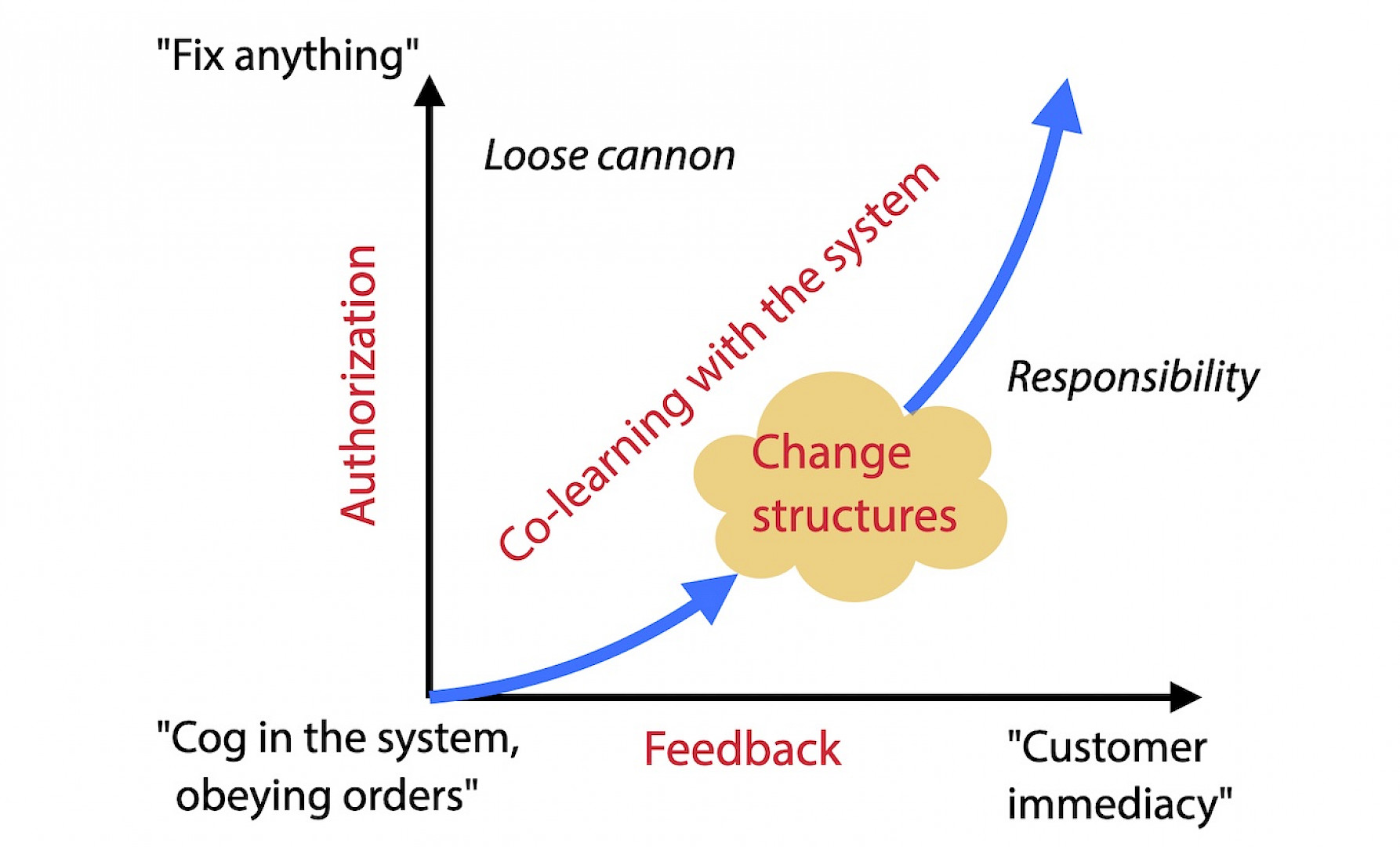Path from Bureaucracy to Teamwork
11.2.2022 — Teamwork is the antidote for bureaucracy. But if you just remove bureaucracy you get chaos. What is missing?

Teamwork is the antidote for bureaucracy. But if you just remove bureaucracy you get chaos. What is missing?
Learning.
William G. Ouchi identified three control mechanisms in organizations:
1) Market system, very much like a business deal;
2) Bureaucratic system, an organizational machine; and
3) Clan system, in practice Teamwork.
Bureaucracy is like a machine that efficiently produces the same results in stable conditions. External change and internal inefficiency might be burning reasons to change.
The bureaucratic system has two aspects:
1) The behavior is defined by processes, roles and responsibilities, and other explicit rules.
2) Workers delegate decisions about their work to managers and experts.
There is of course wide variation in how this is actually implemented. Ouchi's findings and Hackman’s prerequisites for Teamwork help to choose the axes in the diagram: who decides, and how to navigate.
Organizations with a long marriage with Bureaucracy have the unconscious cultural assumption that learning is difficult, expensive, too long-term, uncertain, and unprofitable. Also, understanding what learning means is biased towards individual experts deepening their narrow specialty.
We need to think differently.
Teamwork, or any truly productive work, happens when the goal is clear, challenging, and consequential. Does it work, is it useful?
We need mechanisms for immediate feedback. Then we can learn the customer needs, and learn to deliver accordingly. In Bureaucracy, the feedback would be intermediated by experts and managers.
Teamwork requires Authorization to act on any problem. Otherwise, the great performance is suffocated in waiting.
The environment needs to co-learn to support and to benefit from Teamwork. By Continuous Improvement practices, we create unique understanding about our own work, that outsiders do not have. Acquiring external wisdom is necessary but secondary.
Old structures are built for bureaucracy. After learning enough about our system, we need to have a disruptive structural change, which not only enables but demands learning.
Better to improve the feedback mechanisms and team capabilities first, then increase the authorization.
You can map the status of your organization by placing all your teams and/or Communities on the picture. Thinking Together about each team's situation moves the focus from following the plan to evaluating the value. Much better leadership tool than following plans by traffic lights.
Inspired by LeSS Feature Team Adoption Map
Ouchi, William G. ‘A Conceptual Framework for the Design of Organizational Control Mechanisms’. Management Science, 1 September 1979. https://doi.org/10.1287/mnsc.25.9.833.

